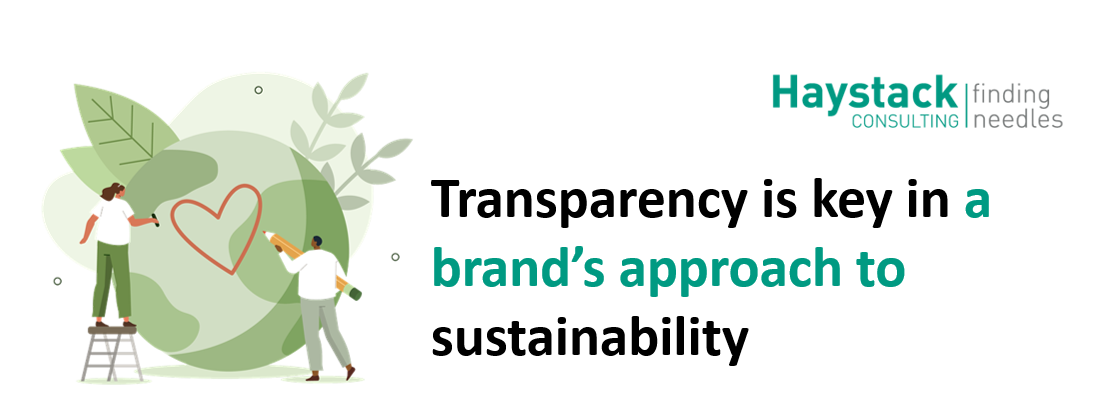Transparency is key in a brand's approach to sustainability
In a ‘post’-pandemic society, concerns about the environment intensify. Brands and retailers are expected to demonstrate sustainable initiatives and a proactive approach to sustainability by, for example, demonstrating green initiatives along the whole supply chain. Consumers conduct more research on what brands are doing to address the issues of climate change.
Furthermore, consumers expect companies to actively help them be more environmentally friendly and healthy but they are not always convinced that companies are helping them with this. This is also called “the credibility deficit”.
Where is this credibility deficit coming from?
First of all, the media often shows the public that a brand’s promises are not always true. Therefore, being transparent about your brand is utterly important.
If you are not transparent, consumers will not buy your brand.
An example: Innocent drinks: this popular smoothie manufacturer has been accused by 26 viewers of misleading them about the total environmental impact of innocent products, creating negative awareness around their brand.
The second main reason for this credibility deficit is the government. Governments are still spending more money on promoting meats or dairy products in comparison to fruit and vegetable products. This lack of support from a powerful institution influences (both consciously and unconsciously) people’s attitude towards sustainable foods and their importance.
Besides the credibility deficit, there are still other positive sustainable trends emerging. One of them is the upcycling of ingredients. Consumers like this because it puts a stop on food waste. Upcycled ingredients save costs, do not create extra waste and are a win-win for both consumers and nature. A lot of start-ups have already taken this opportunity to work with upcycled ingredients.
An example: “The ugly company”: they prevent food waste by upcycling ugly fruit and transforming it into beautifully packaged healthy dried fruit snacks.
An example: “Upcycled chocolate chips cookies”: these cookies are made from tofu and soya production leftovers.
If we talk about waste, plastic in the ocean is a big problem. Yearly, we produce 400 million of plastic, of which 40% becomes waste within a month. One of the solutions brands are coming up with are ‘circular packaging’, meaning that all wastefulness is eliminated from the packaging chain and that no raw materials are lost.
Lastly, there is also ‘the refill movement’. Reusing and refilling means that packaging remains in the system and can be used repeatedly.
An example: the company “Billie”, there you can get a cup with an extra payment of euro - once you return the cup you get the euro back.
An example: the company “Pieter pot”: you get your products in glass, and you give them back – it is cleaned for you, and you can use the glass for taking other products home. So, there is no use of plastic anymore.
To conclude, there are a lot of initiatives and opportunities that brands could embrace within the sustainability trend and in managing waste. More importantly, it is important that brands always stay transparent when implementing these trends and that government balance out their support in sustainable food products more towards the future.

